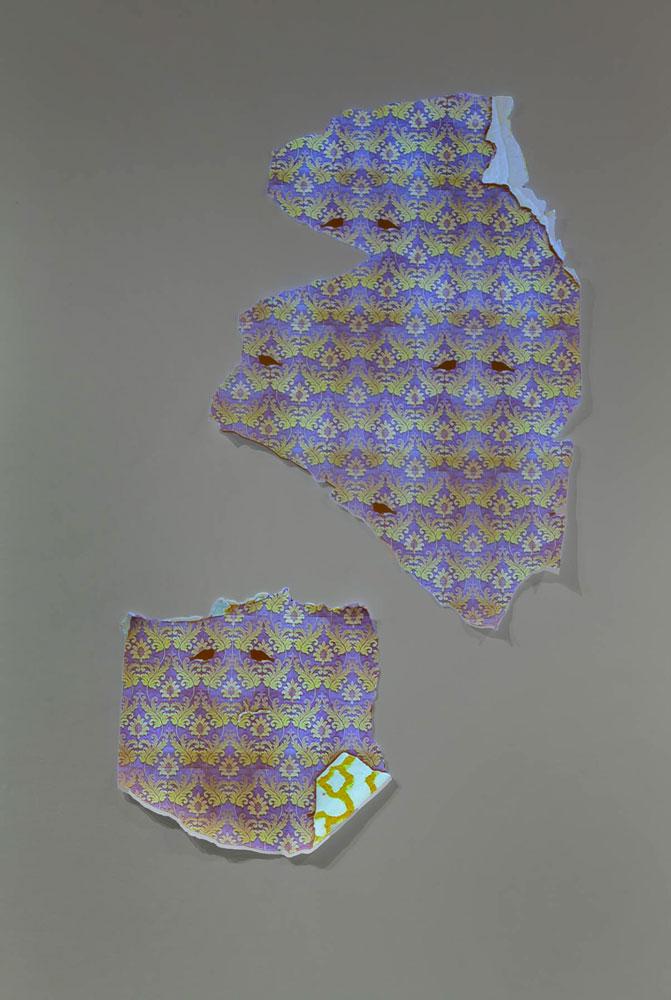Walking into Kevin Yates’s exhibition at Susan Hobbs Gallery earlier this fall, my eye was immediately drawn to the back of the space by a curious object. In it, a large grey dresser seemed to float, upside down, above an identical piece of furniture. In between these cabinets, two aquariums were stacked—one right-side-up, the other not, reinforcing the mirrored effect. Also, in each glass tank, a small sword pierced a tiny black skeleton reclining in kitschy coloured gravel, offering a pointed (yet humorous) reminder of our mortality.
Yates’s exhibition was full of such curiously twinned elements. His sculptures and video works drew viewers in for closer inspection on various fronts: to see Yates’s fine and detailed workmanship; to verify the exactitude of his twinning; and to ponder the odd, watery juxtapositions he offered.
The title of the show, “Usher the Fall of the House,” wryly referenced Edgar Allan Poe’s short story “The Fall of the House of Usher.” In this story, a motif of doom-filled twinning is introduced when the narrator sees the unsettling reflection of the titular house, and its surrounding trees, in the waters of a small lake. The story ends with the demise of the fraternal Usher twins and the eventual obliteration of the house itself as it is split in two and sinks into the water. Beauty, destruction and the supernatural are interwoven in the story and in Yates’s works.
Yet Yates’s works respond to more than Gothic literature; they draw upon more recent phenomena as well—namely, New Orleans after Hurricane Katrina. Waterline, a video work produced with his brother Robert Yates, takes one view of a dilapidated kitchen damaged by Hurricane Katrina and slowly “floods” the space using a visual mirroring effect. The interplay between the growing, watery “reflection” and the shrinking “physical space” in this video has an effect that is both devastating and beautiful. Here, Yates melds harsh reality and imaginary fancy to create a poignant commentary on the destructive power of nature and the fragility of humankind.
On the wall next to Waterline are miniature model houses with side yards of barren, black trees; each house and yard is reflected directly underneath itself with an upside-down twin. Again, the twinning here would seem to reference standing water after catastrophic flooding, and indeed the titles of each of these works—9th Street, Camp Street and Chestnut Street—reference New Orleans locales. These miniature curiosities, whose meticulous sense of detail fascinates, provoke the viewer to reflect on a moment of disturbing calm.
This exhibition offered a peaceful, contemplative moment—a respite from the constant sensory bombardment of our daily lives—at the same time that it evoked horror and strife. Kevin Yates creates unsettling, fascinating artworks by capturing moments of impossibly perfect reflection that could be the (seeming) calm after the storm.









